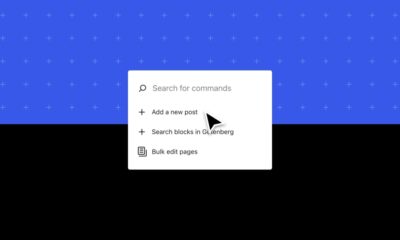MARKETING
What Is the 80/20 Rule? How the Pareto Principle Will Supercharge Your Productivity

If you’re sitting at your desk staring at your to-do list and you have no idea where you should start, you need to apply the Pareto Principle, otherwise known as the 80/20 Rule.
The Pareto Principle, or the 80/20 Rule, is a common principle used across various industries and businesses to help determine the highest priority tasks that yield the most impact. When you’ve identified the high-impact tasks, you’re guaranteed to increase your productivity and your profits.
Pareto Principle definition
If you’re familiar with economics, you’ve likely heard of the Pareto Principle (or the 80/20 Rule). The Pareto Principle means this: 80% of your results come from 20% of your profits.
In the early 1900s, Vilfredo Pareto recognized this occurrence when studying Italy’s wealth distribution. Pareto observed that 80% of Italy’s land was owned by only 20% of the population. Pareto also noticed this same 80/20 occurrence in other things, like the productivity of the pea plants in his garden.
It is important to understand the 80/20 Rule is not a mathematical formula. Instead, it is an observation explaining the correlation between effort and outcome. If only 20% of your task list is deemed a high priority and those high priority tasks yield the highest return, why not spend your time and effort there?
Examples of the Pareto Principle
In business, for instance, this means 80% of your profits come from 20% of your sales. So, it would help if you focus your energy on those clients who make up the 20% of your highest sales.
If you’re a marketer, you may have noticed that 20% of your marketing messages account for 80% of your campaign results. Or, if you’re working on a major marketing project, you might see that 20% of your initial efforts are responsible for 80% of the final outcome.
If you’re a financial advisor, you might have noticed that 80% of your business profits derive from 20% of your clients. It might be best to work on maintaining the relationship with those particular clients.
The Pareto Principle doesn’t just apply to overall outcome observations, though.
Instead, the 80/20 Rule can be applied to nearly every part of your workday to help maximize efforts and productivity.

How to Use the 80/20 Rule to Your Advantage
According to the 80/20 Rule, 20% of your efforts produce 80% of your results.
If you think about the Pareto Principle in terms of productivity, it doesn’t necessarily mean you should only work 20% of the time or go into the office one day of the week.
It is essential to note the Pareto Principle does not suggest you work less.
Instead, when applying the 80/20 Rule to your workday, the Pareto Principle can help you identify the tasks you need to focus on to maximize your time and results.
In other words: work harder on the tasks that matter the most and don’t sweat the small stuff.
How to Apply the 80/20 Rule to Maximize Productivity
If you are in charge of a team or overseeing a project, using the Pareto Principle can help you identify your team’s high-priority tasks. The 80/20 Rule assumes that even if your team spends an equal amount of time on each task on the to-do list, only two of those tasks will carry the bulk of the results for the project.
So, to apply the Pareto Principle, you’ll need to make a list of all tasks that need to be done to complete the project. Make sure you include everything on this task list. After making a list, consider which tasks will have the most significant impact on the project to give the highest results. Some tasks may seem small, but sometimes the smaller tasks have the most significant effect.
Delegate these high-impact tasks to your team and worry about the other tasks later.
You can apply the same concept to your own to-do list. Identify which tasks will yield maximum results and focus your efforts there.
How to Apply the Pareto Principle to Make Business Decisions
The 80/20 Rule can help you make tough business decisions, too. Maybe you have a list of projects for several different clients, but you’re running short on time. If the 80/20 Rule is true, you’ll want to focus your time and efforts on pleasing and developing solid relationships with the 20% of your clients who yield the most results for you (read: profits).
This isn’t to say you should be unprofessional and disrespect your other clients. But, if you’re feeling overwhelmed or tight on time, it might be helpful to recognize where you’re receiving the most of your results and dedicate your time and effort to those clients.
The Pareto Principle can also help you think about business problems and potential solutions. To apply the Pareto Principle to help you solve your problem, think of all the possible solutions, and work backward. You’ll want to work on the two best solutions that solve your problem.
Avoiding the Pitfalls of the Pareto Principle
Like all principles, the Pareto Principle has a few drawbacks.
It’s important to remember that the 80/20 Rule is not about reducing your workload. Instead, the Pareto Principle helps you identify the most critical, high-impact tasks on your to-do list. Don’t neglect the small tasks, unimportant tasks, though. Eventually, those small tasks will become important if you let them sit too long.
The 80/20 Rule might help you identify which of your employees are producing the most work if you’re managing a team. Looking at the 20% of employees that complete 80% of the work doesn’t necessarily mean you should fire everyone else. Instead, use the findings of the Pareto Rule to delegate tasks to your team fairly.
Encourage your team to collaborate on high-priority tasks. Or assign different jobs to different people and check in with everyone to ensure they feel responsible for their part of the equation. Your employees will be encouraged to work harder if they know they’re contributing to the biggest piece of the rewards—not just the minor details.
Understanding the Pareto Principle
Remember, the numbers 20% and 80% are not exact statistics, just estimations and observations. The point of the 80/20 Rule isn’t the numbers. The point is everything in business is not created equal. There are a few things that are weighted with a far greater reward compared to other things.
Spend your time working on tasks or working with clients that will yield the highest results. Applying the Pareto Principle to your business makes you more likely to increase your profits while cutting back on wasted time and efforts.
Editor’s note: This post was originally published in [Month Year] and has been updated for comprehensiveness.














You must be logged in to post a comment Login